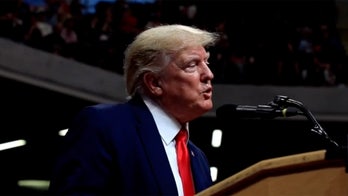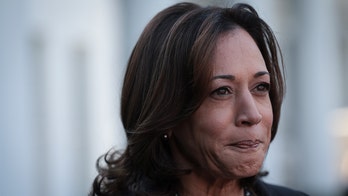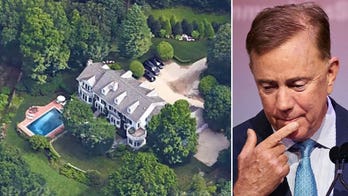
(Reuters)
As Japanese officials try to drive seawater into a nuclear power plant deteriorating after an apocalyptic mix of massive earthquake and devastating tsunami, U.S. officials are seeking to reassure Americans that U.S. nuclear sites are safe.
"U.S. nuclear power plants are built to withstand environmental hazards, including earthquakes and tsunamis," reads a statement released Sunday by the Nuclear Regulatory Commission.
"Even those plants that are located outside of areas with extensive seismic activity are designed for safety in the event of such a natural disaster," the statement continues.
Officials at Japan's Fukushima Daichi nuclear power plant are doing all they can to prevent the cores of two different reactors from melting down after a massive 8.9 magnitude earthquake that hit in the Pacific Ocean on Friday. The temblor spawned a tsunami that reached three miles inland in Japan, wiping out nearly everything in its path and setting off an explosion at the structure housing the Unit 1 reactor.
The damage shut down the cooling system that keeps the core of the reactor from heating up and melting itself. The second reactor faces potentially the same fate, while a third reactor at the site has not been as badly damaged.
While the enormous damage may seem a once in a lifetime scenario -- the quake reportedly caused a rupture 186 miles long and 93 miles wide in the sea floor and shifted the island of Japan 10 feet -- a trifecta of earthquake, tsunami and nuclear meltdown in the U.S. remains a possibility.
"Could this happen in the United States? Yes, this could happen in the United States," Joe Cirincione, a nuclear power expert with a long resume in Washington, D.C., told FoxNews.com.
Diablo Canyon in California is "a classic case of a very large nuclear reactor in an area that's seismically active," said Cirincione, president of Ploughshares Fund, which seeks to eliminate nuclear weapons and provides grants to organizations seeking to increase peace and security.
"A large earthquake could knock that reactor out. You could see a core meltdown scenario at that reactor as well," he said.
According to the U.S. Geological Survey, several million earthquakes occur in the world each year, but many go undetected because they hit in remote locations at small magnitudes. On Sunday, the USGS reported that 394 earthquakes had shaken the California-Nevada fault line in the last week alone. Fifty-one earthquakes struck in the New Madrid Seismic Zone that covers the areas of Missouri, Tennessee and Arkansas.
In several of those locations sit nuclear power plants, all built along large water supplies which are needed to keep the reactors cool. In some cases -- like Diablo Canyon's -- that means a raised potential for a tsunami aftermath following a massive earthquake.
But Diablo Canyon is not constructed the same way as Fukushima Diachi's. Diablo is a pressurized water reactor while Diachi is a boiling water reactor. Most reactors in the U.S. are pressurized, which is allegedly safer because radiation from a leaking core wouldn't end up in the steam release generated by the turbines.
Even with U.S. public opinion slowly moving in favor of more nuclear power construction, Cirincione said he expects the Japanese disaster will drive up protests against additional construction.
"Three-Mile Island, we came close to a meltdown but didn't and it killed production of nuclear
reactors in the United States for almost four decades. Chernobyl did meltdown and set back global production on reactors for decades. It's hard to believe that this incident in Japan won't have a similar effect," he said.
On the other hand, if the Japanese are able to contain the core at the Daichi plant, which will be determined over the next day, it could invigorate the call for more nuclear power plants.
"If we don't get a meltdown, it will be fair to point to this as a success in nuclear power. You had a 40-year-old nuclear reactor withstand an earthquake and a tsunami and it kept the core intact," Cirincione said. "If that is the scenario that will be used as an argument to say look nuclear power is safe even this 40-year-old plant could take a one-two punch from mother nature and survive."
While the United States hasn't approved a new nuclear plant in 30 years -- meaning currently operating reactors for the most part are nearly as old as Diachi's -- the NRC is considering 20 new license applications. In addition, several nuclear facilities that have been under construction for years are now close to going operational.
"The NRC requires that safety-significant structures, systems and components be designed to take into account the most severe natural phenomena historically estimated for the site and surrounding area," the NRC stated in its release Sunday.
Sen. Chuck Schumer, D-N.Y., said Sunday he's monitoring events in Japan, but remains willing to consider expanded use of nuclear power in the United States.
"Still things are happening, but the bottom line is we do have to free ourselves of independence from foreign oil on the other half of the globe. Libya showed that. Prices are up, our economy is being hurt by it or could be hurt by it," Schumer said on NBC's "Meet the Press. "I'm still willing to look at nuclear. As I've always said, it has to be done safely and carefully."




